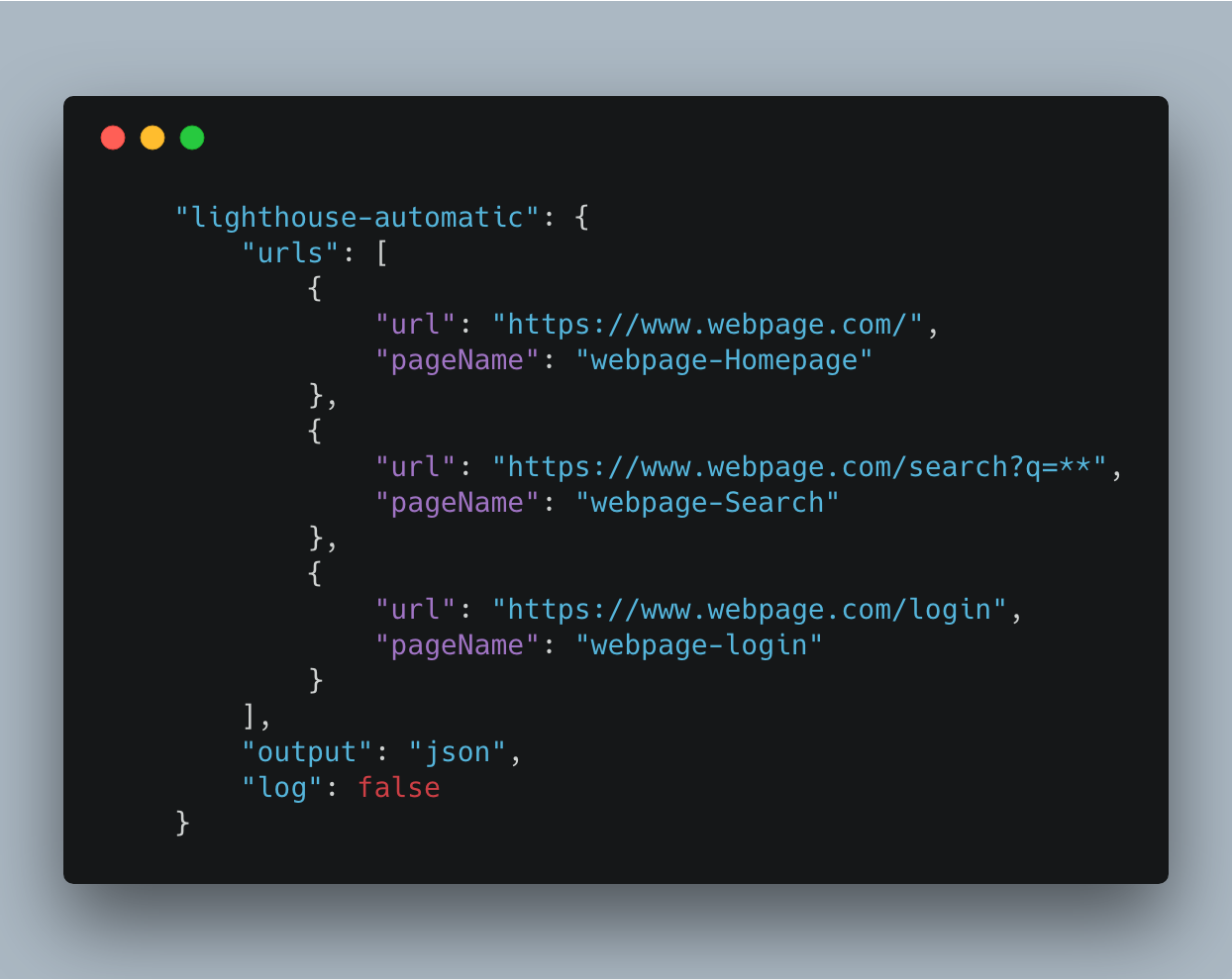lighthouse-automatic v1.0.6

1. lighthouse-automatic
Google lighthouse as a service, automatically run lighthouse tasks in the background and profile your webpages
See ./example for example project.
2. Setup
Lighthouse automatic can be found on npmjs.com.
To add to your project:
yarn add lighthouse-automatic -D
Or to install lighthouse-automatic as a cli app (global):
yarn add global ligthouse-automatic
3. Configuration
Configuration is handled by properties declared in your package.json file.
Note* If using lighthouse-automatic globally the tool will look for a package.json in the current directory.
In your package.json you can configure the tests as follows:
"lighthouse-automatic": {
"urls": [
{
"url": "https://www.webpage.com/",
"pageName": "webpage-Homepage"
},
{
"url": "https://www.webpage.com/search?q=**",
"pageName": "webpage-Search"
},
{
"url": "https://www.webpage.com/login",
"pageName": "webpage-login"
}
],
"log": false
}See 5. Options for more configuration.
4. Run
run the lighthouse-automatic command.
I suggest adding to npm scripts (see example project scripts.start) for ease of use.
5. Results
Head to <your-project-directory>/lighthouse-reports and the test results will be available to collect.
Currently results are only reported in .json format
5. Options
output: "string" choose the output filetype, possibilities arehtmlorjson"urls": Array of {URL} objects, used to describe which urls to run lighthouse against;
url: {Object} - small object for each lighthouse automatic test destination.
{
"url": "https://www.webpage.com/",
"pageName": "webpage-Homepage"
},"log": boolean - decide whether you want logs to be shown during build;
6. Next release
- Post/Curl results to external endpoint
- Run tests every X minutes


